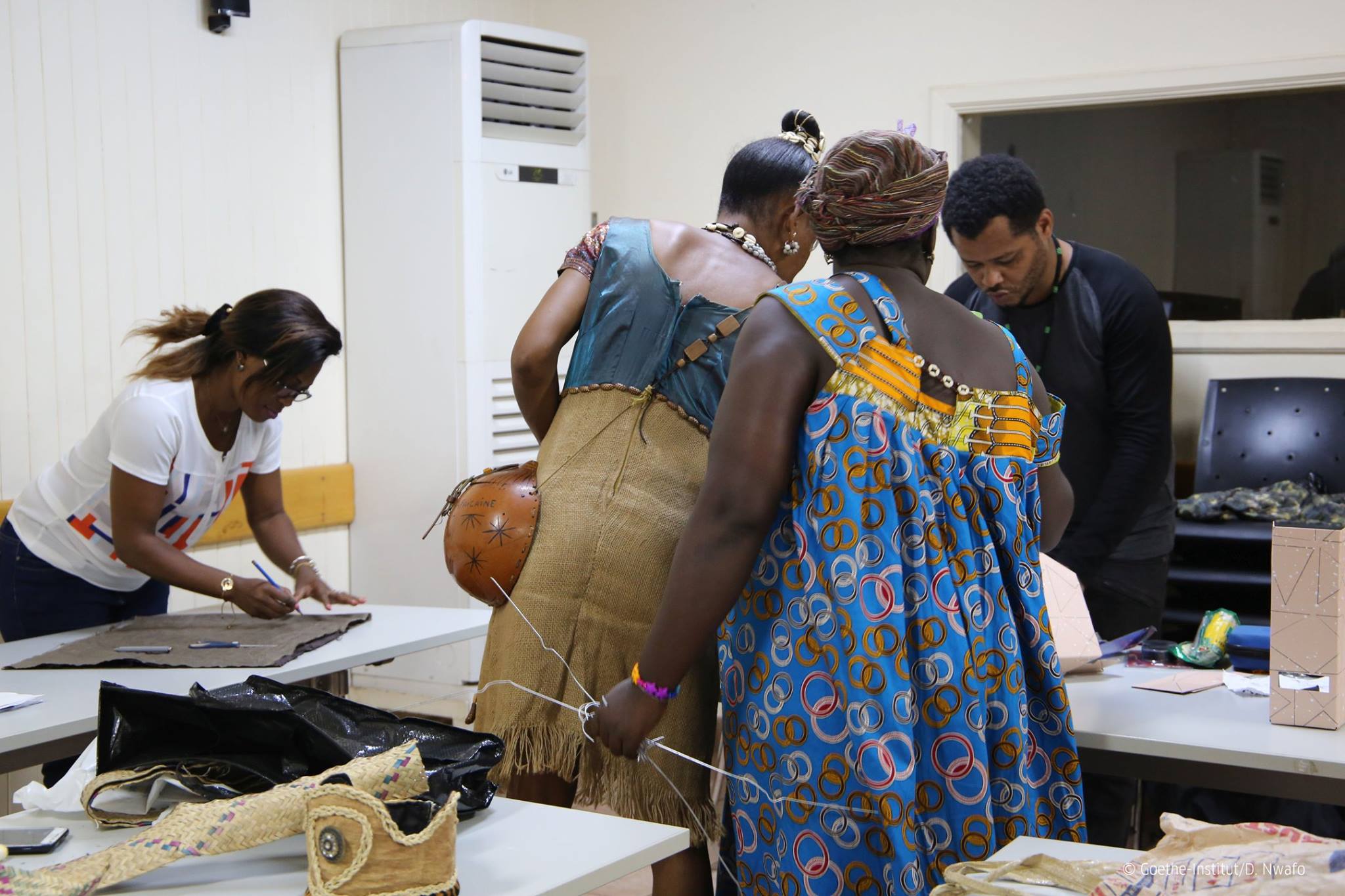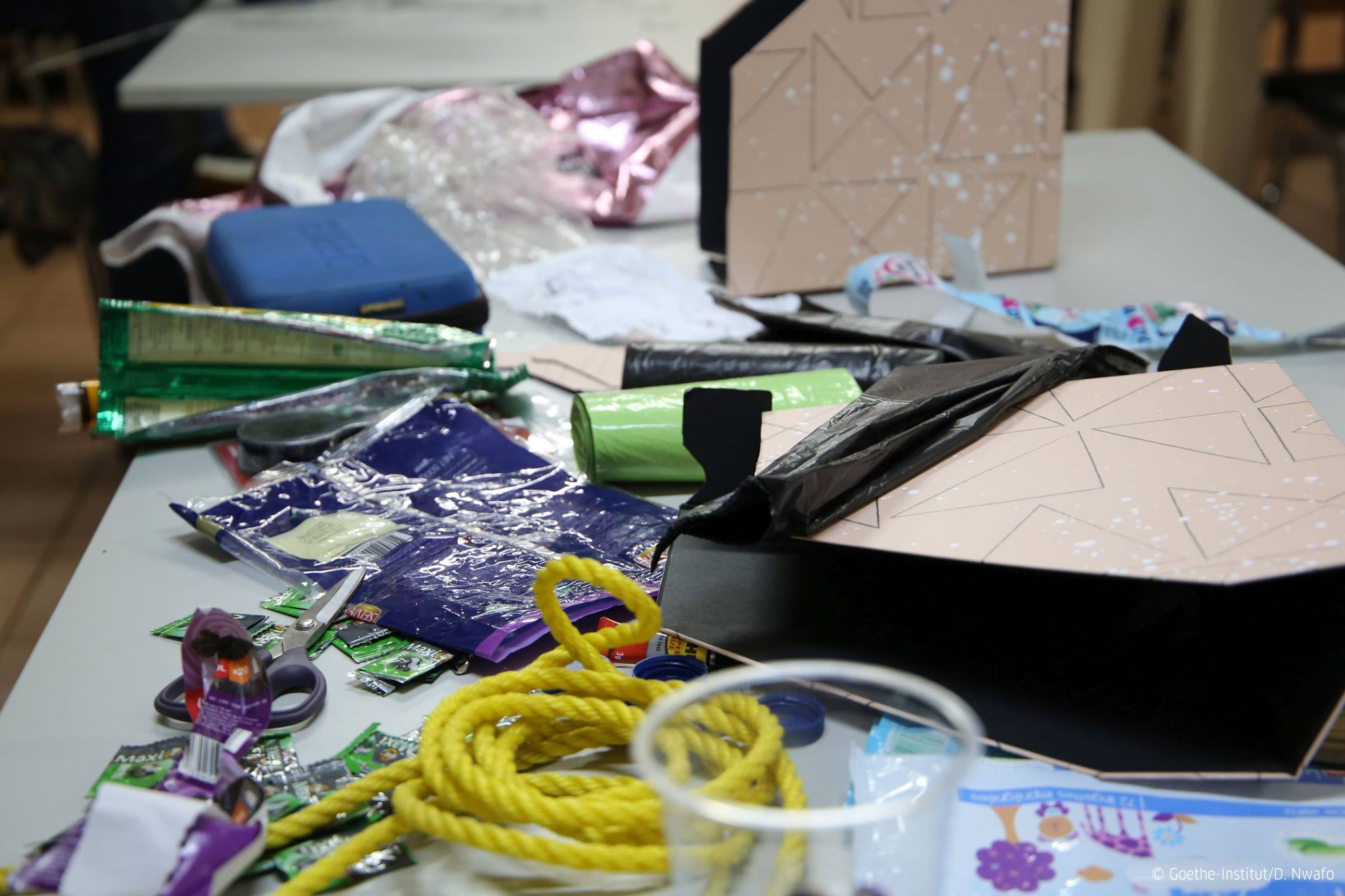Can a costume be performative? Back to Blog

In March 2019, I had the opportunity to lead a workshop on performative costume design at the Goethe-Institut Kamerun as part of Goethe-Institut’s cooperation with Perform’Action, an international performance festival in Yaoundé (Cameroon) organized by the artist Christian Etongo. With an audience composed of local costume designers, fashion designers, and performers interested in making their own costumes, we joined together, creating an inspirational space to share our references and aesthetics.
I had planned the workshop to be a space for one to reflect on other paths for costume design and, as a result, develop other ways of performing. My vision was to create a space in which we could understand costume as a complex visual element that interacts with a body in a given space.
I like definitions of costume design that make us think about the costume as an integral element of performance, while simultaneously an independent and non-hierarchical or non-submissive object. In doing the workshop, it was important to me that I be able to convey the thought that costume provokes a complication of borders, embodiment, and meaning.
Along with the diverse insight this workshop opened me to, the conception of it in itself gave me the opportunity to reread various texts regarding the multifunctionality of costume design and revisit works from artists whose objects, installations, and performances are rich sources of inspiration for me.
The text “Costume” by Michelle Liu Carriger (2017) was one of the references that I chose to use as a point of discussion with the participants for all of these topics. Carriger’s text allows us, in just a few pages, to see how the multiple capacities of costume ranges, from its materiality to its aesthetic meanings and implications.
When Carriger wonders if "... is a costume part of the actor or the character or the material context of the performance?" (Carriger 2017: 42), the invisibilization of the costume on stage becomes neglected. Serving as element of illusion on stage was, and still is, a very common function of the costume so much, that a traditional way of invisibilizing the costume to achieve the effect of illusion often leads costume designers to say: if the costumes weren’t noticed, this is great! I did my job well. But any deeper, more critical look at the costumes in different productions may reveal interesting material to discuss, research, and further analyse.
Understanding that costume is not a "mere superficial spectacle", but rather something that "has deep and broad import"(Carriger 2017: 46), allows us as costume designers to create costumes that not only stand out (self-referential) by themselves, but also complement and blend with either the performer's body or the space in which it’s presented. During the workshop, I tried to juggle with different theoretical approaches and the designing of objects and garments for performance.
While the participants were creating costumes involving the use of recycled materials and remains of fabrics, a plethora of compelling discussions emerged, covering areas of all direction. We shared our opinions on subjects like the recycling and waste treatment in Cameroon’s metropoles, the political and social control of bodies, the co-existence of colonial heritage, and decolonial strategies to survive them. Each participant's thoughts on these different topics revealed pieces of their personal perspectives and values, reflecting them in their own aesthetic choices.
As previously mentioned, the workshop consisted of a diverse group of artists, all with significant experience in making their own costumes for their own performances or artistic works, which provided the workshop with a very rich environment for exchange. In the end, I was able to learn a little about the creative process of Cameroonian artists, such as Ange Kayifa, who develops feminist performances and discusses gender violence in Cameroonian society, or Ondoa L'African, who is a Griot and, in his work, deals with the conflicting relationship between ancestral knowledge and the reflexes of colonization in the urban life of an African metropolis like Douala.
Among our participants, we also had the experienced Cameroonian costume designer, Jeanne Nfap, who works in various theater and film local productions, and also the jewelry designer Vieux Loup.
Holding this workshop allowed me to meet and get to know all of these amazing, influential artists. It also led me to believe even more in the notion that a costume can be performative, political, and critical. It simply cannot be reduced to innocent details or mimetic effect; it holds so much more.
References:
Michelle Liu Carriger. 10 Oct 2017, Costume from: The Routledge Companion to
Scenography Routledge
Accessed on: 12 Feb 2019
https://www.routledgehandbooks.com/doi/10.4324/9781317422266.ch3
Photos: Goethe-Institut Kamerun | D. Nwafo | March 2019
